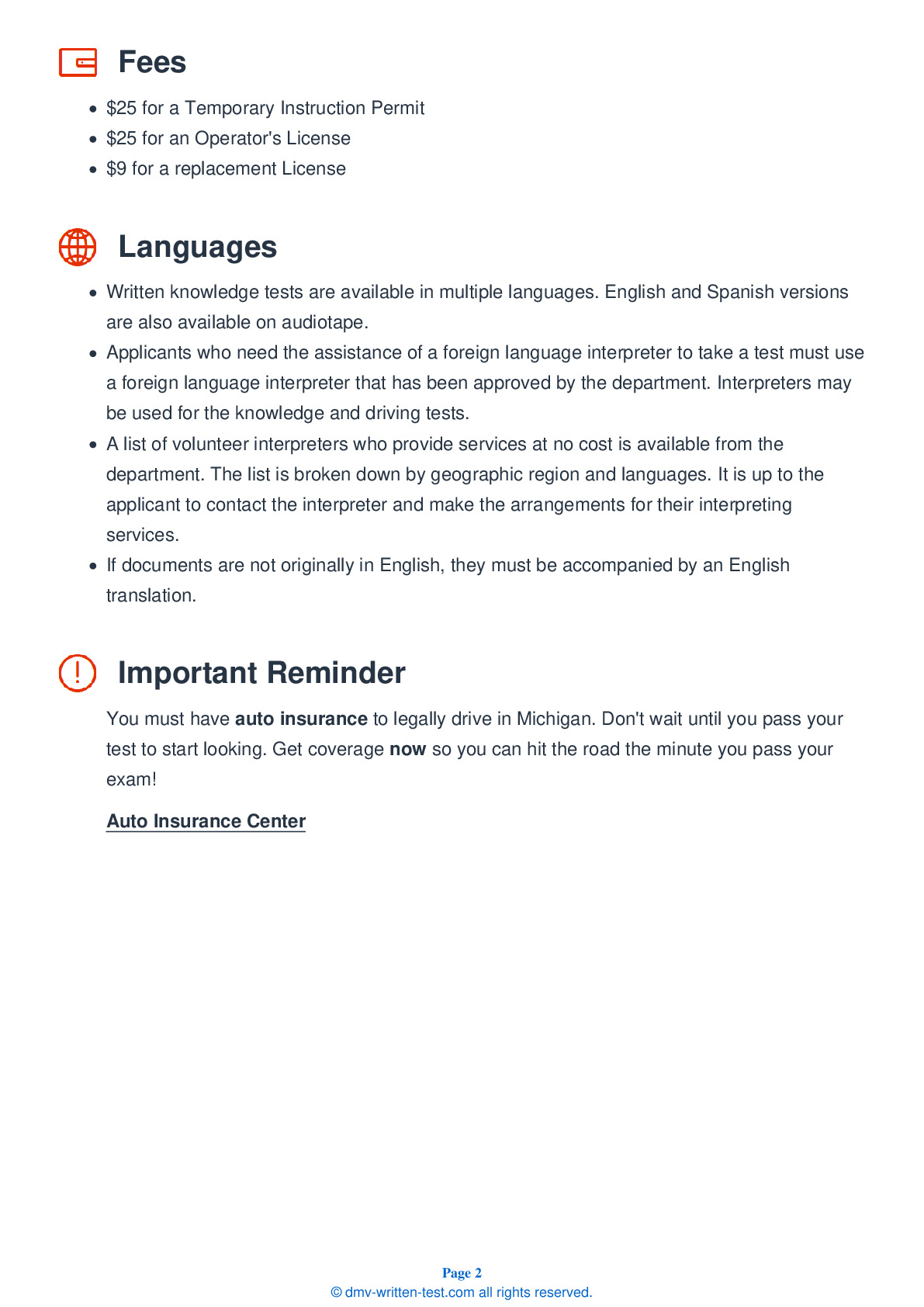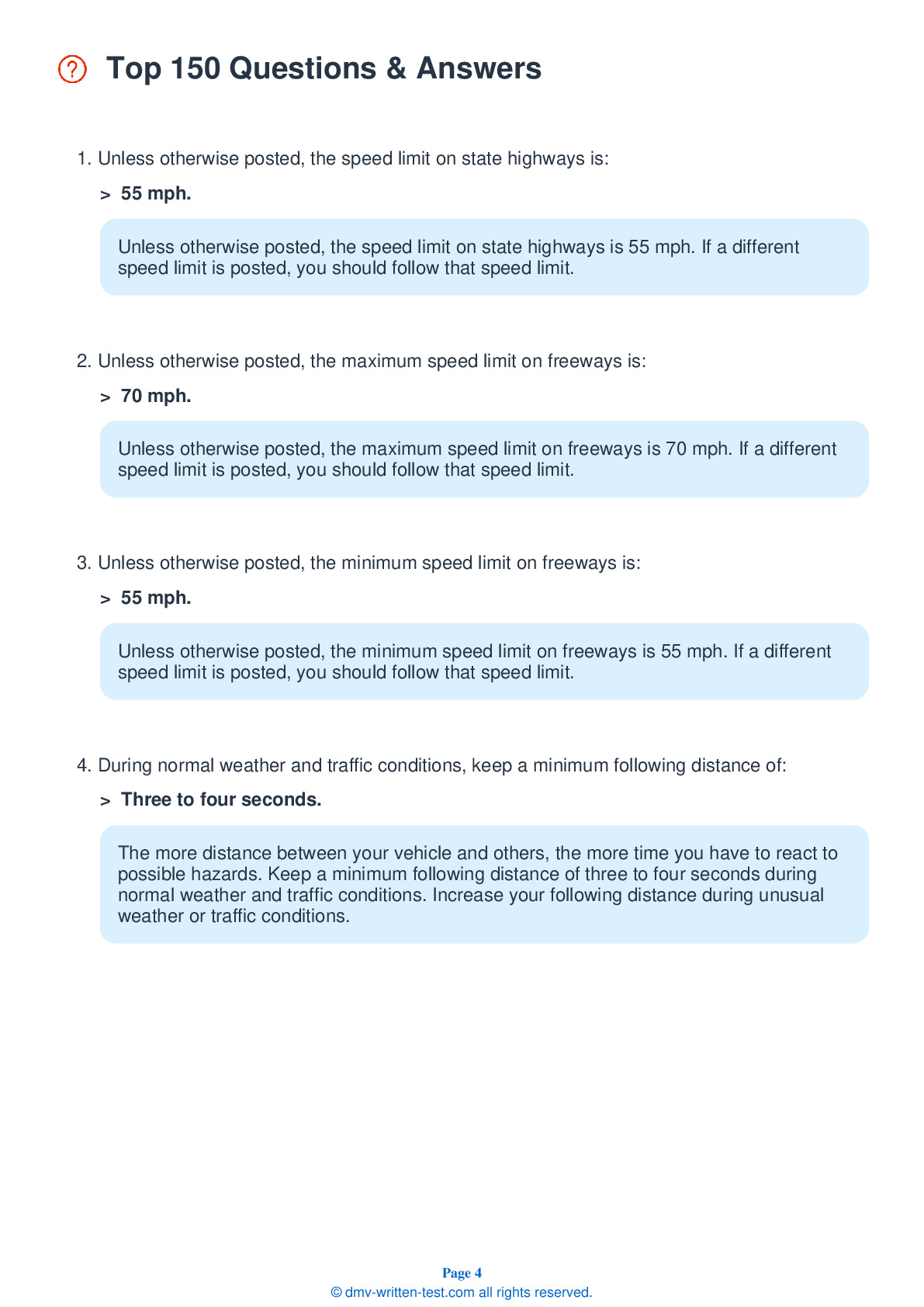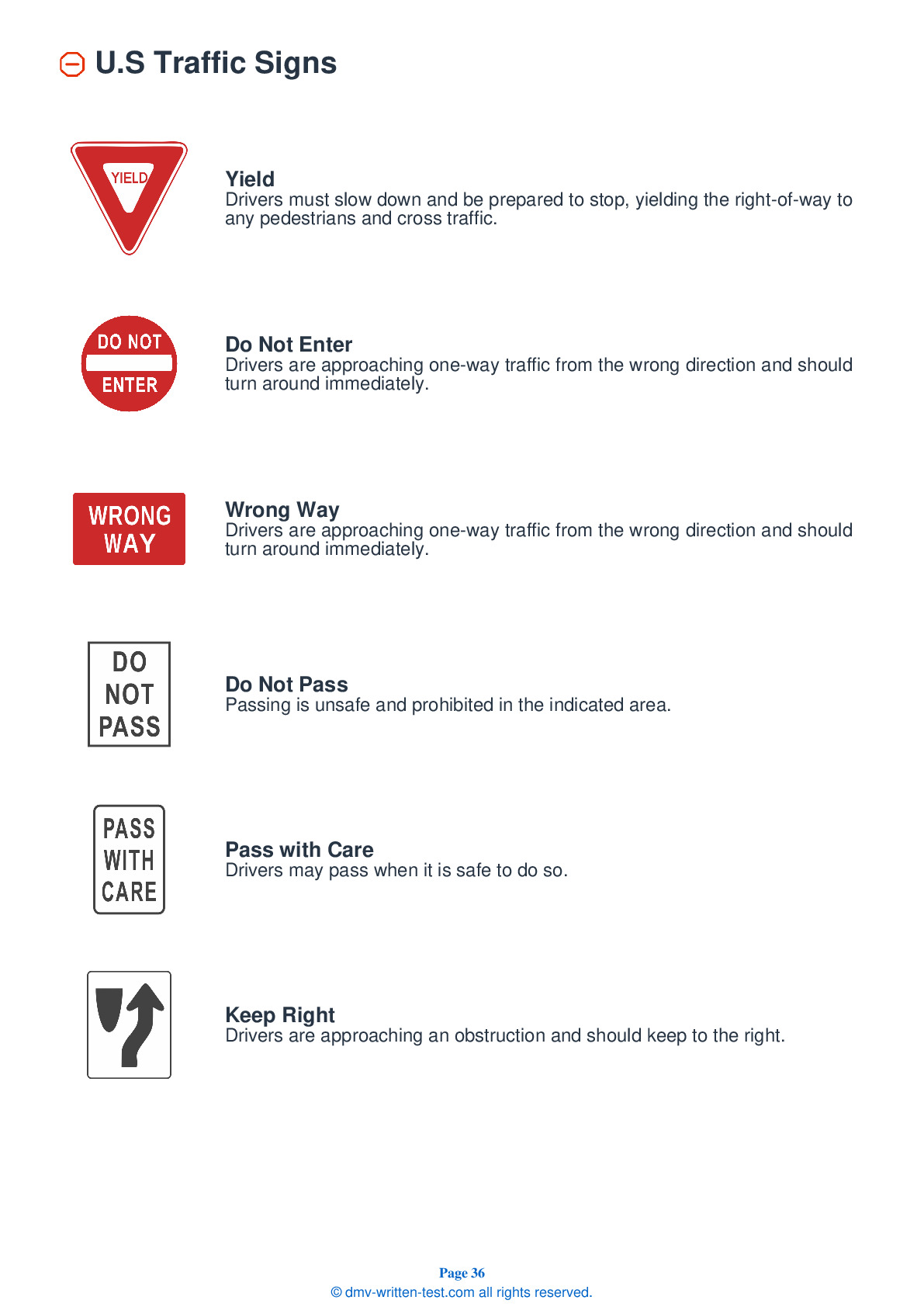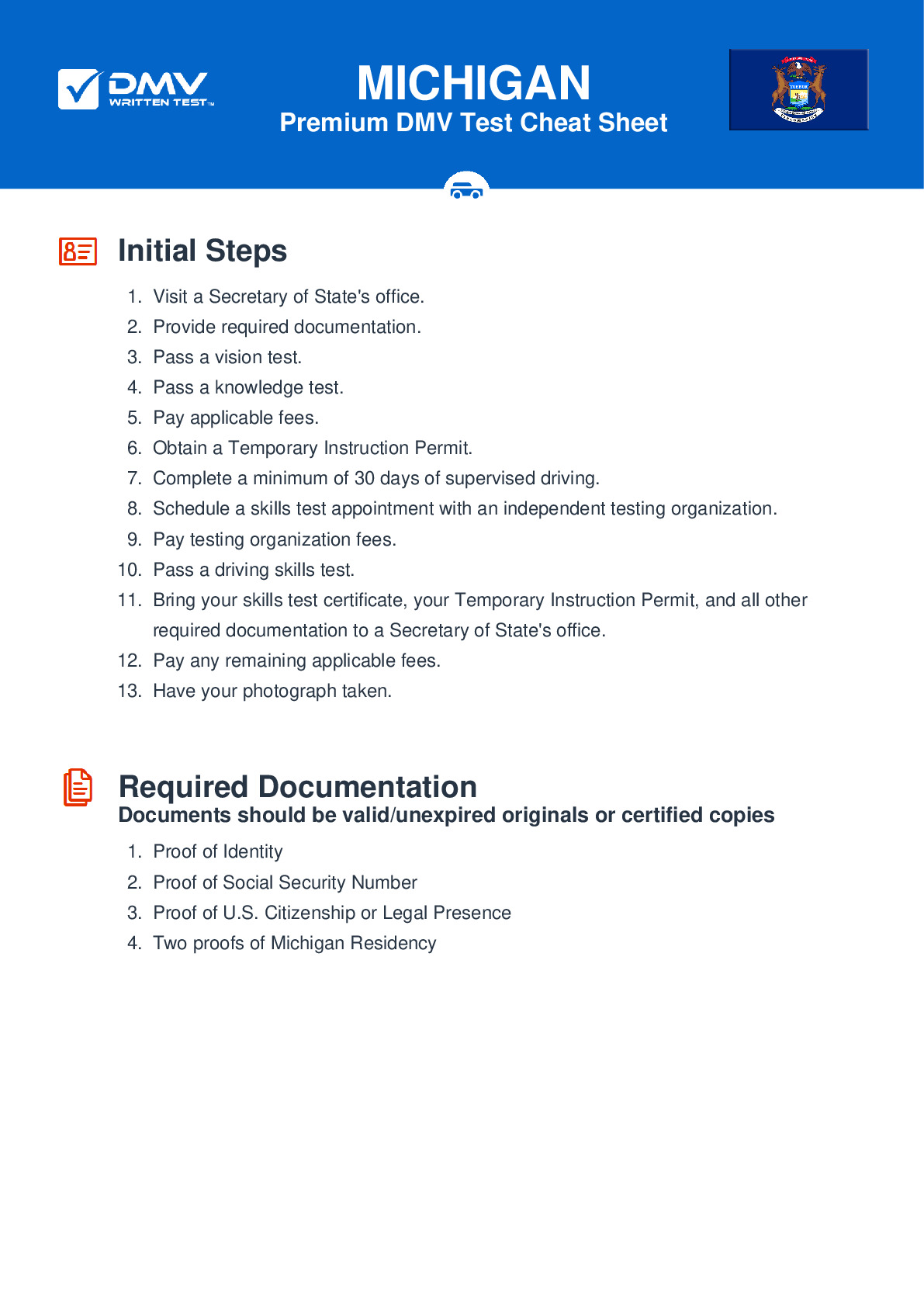2025 Michigan Permit Test 23
The following questions are from real DMV written tests. These are some of the actual permit questions you will face in Michigan. Each permit practice test question has three answer choices. Select one answer for each question and select "grade this section." You can find this button at the bottom of the drivers license quiz. For a complete list of questions and answers for Michigan please visit https://cheat-sheets.dmv-written-test.com/en/michigan/car.
Number of Tests
Number of Question
Passing Score
1. If you need to drive in foggy weather:
Explanation
You are required to use your headlights during the day when visibility is reduced to 500 feet or less. When you first turn on your headlights, be sure they are adjusted to the low beam setting. Using high beams in fog or rain will cause the light to reflect back into your eyes, lowering visibility even more.
2. What do speed limit signs indicate?
Explanation
Speed limit signs indicate the maximum or minimum safe speed that is allowed to be driven on a roadway. The maximum limits are for ideal conditions and you must reduce your speed when conditions require it.
3. A driver should be extra alert to motorcyclists, bicyclists, and pedestrians because:
Explanation
In many collisions with motorcycles, bicycles, and pedestrians, drivers reported that they were looking but still did not see the smaller vehicle or pedestrian. These can be more difficult to spot in traffic than passenger vehicles because they are smaller, may move faster, and have less noticeable lighting. To prevent collisions with these smaller and less protected road users, drivers should always be alert to the presence of motorcycles, bikes, and pedestrians.
4. What is a "No zone?"
Explanation
"No zones" are the large blind spots around trucks and other large vehicles. Drivers of smaller vehicles should avoid lingering in "No zones."
5. When two vehicles enter an intersection from different highways at the same time, which vehicle must yield the right-of-way?
Explanation
At intersections that are controlled by signs or signals and at intersections that are uncontrolled, the driver on the left must yield the right-of-way to the driver on the right when two vehicles arrive to the intersection at the same time.
6. If your car starts to skid, turn your steering wheel:
Explanation
If your vehicle goes into a skid, you should turn the steering wheel in the direction you want the vehicle to go. As soon as the vehicle begins to straighten out, turn the steering wheel back the other way.
7. When using a roundabout, drivers should:
Explanation




